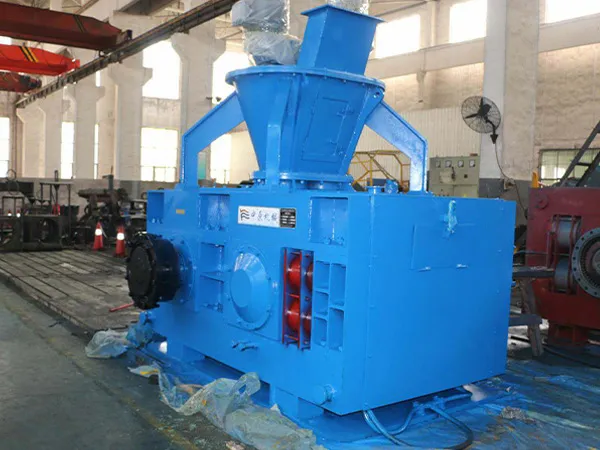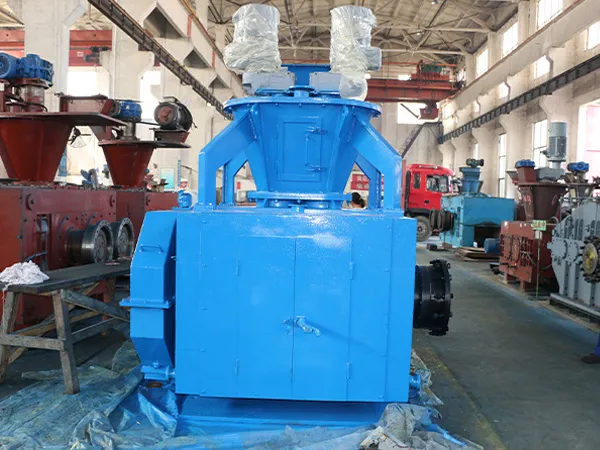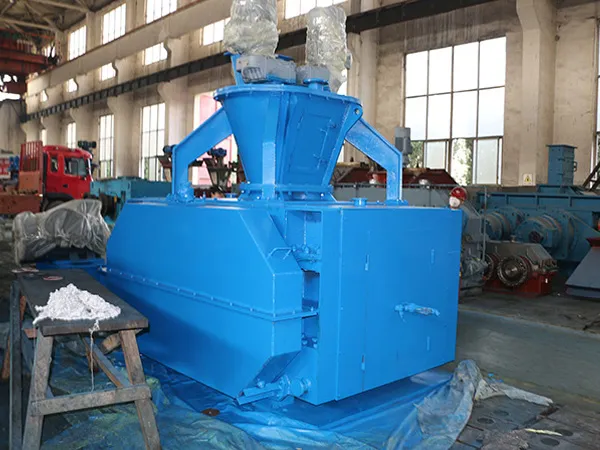

-
Products
-
Application


Briquetting machine as material molding equipment, in many areas have an important position, but since as mechanical equipment, then after a long time of use, mechanical failure is inevitable, and for the briquetting machine, the ball nest misalignment is also a relatively common problem, which requires technicians to master the briquetting machine ball nest misalignment adjustment method, timely adjustment of its, will not affect normal production.

Several factors can cause misalignment:
Wear and Tear: Continuous operation can lead to wear of the ball nests and the rollers, changing their shape and alignment.
Foreign Objects: Impact from foreign objects entering the machine can damage the nests and affect their position.
Improper Assembly or Installation: Errors during the assembly of the machine, or when changing the rollers, can cause misalignment.
Vibration: Persistent vibration during operation can lead to slight shifts in components over time.
Thermal Expansion/Contraction: Changes in temperature can cause thermal expansion and contraction of the components, potentially leading to temporary misalignment.
Inadequate Lubrication: Insufficient lubrication can cause increased wear and heat, affecting alignment.

Here are some signs that indicate misalignment:
Inconsistent Briquette Shape: Briquettes are not uniform in shape or have irregular edges.
Flashing: Excessive material squeezed out between the rollers.
Difficulty Releasing Briquettes: Briquettes stick to the rollers or are difficult to eject.
Increased Machine Noise: Grinding, scraping, or other unusual noises.
Uneven Wear: Visible wear on one side of the ball nests or rollers more than the other.
Overheating: Increased heat buildup in the rollers or bearings.
Excessive Force Required: More force than usual is required for briquetting operation.
Roller or Bearing Failure: Premature wear or failure of rollers or bearings.

The specific method for adjusting ball nests depends on the design of the briquetting machine. However, here are the common approaches and considerations:
1. Visual Inspection:
Check for Visible Damage: Start by inspecting the rollers and ball nests for visible damage, such as chips, cracks, or uneven wear.
Observe Briquette Formation: Watch how the briquettes are formed. Observe if material is being squeezed out at the sides or if there is inconsistent filling.
Roller Alignment: Use a straight edge or level to check for proper roller alignment. The distance between the rollers should be consistent across their width.
Use a Calibrated Eye: With experience, you will be able to spot subtle misalignments by eye.
2. Mechanical Adjustments:
Shims/Adjusting Plates: Many briquetting machines use shims or adjustable plates behind the bearing housings. Adding or removing shims can adjust the spacing and alignment of the rollers.
Eccentric Bearings: Some machines use eccentric bearings, where the bearing is offset from the center of its housing. Rotating these bearings allows for fine-tuning the roller position.
Tensioning Mechanisms: Check the tensioning mechanisms used to hold the rollers in place. Proper tension is critical for consistent alignment. Adjust or replace if necessary.
Centralized Adjustment System: Some modern machines incorporate centralized adjustment mechanisms for easier and more precise adjustments.
3. Measurement Tools:
Feeler Gauges: Use feeler gauges to measure the gap between the rollers at various points. This ensures consistent spacing and proper alignment.
Dial Indicators: Mount a dial indicator on a stable surface and use it to measure the runout (radial movement) of the rollers. This can indicate if the rollers are bent or misaligned.
Laser Alignment Tools: For highly accurate alignment, laser alignment tools can be used. This is usually done when installing new rollers or during major maintenance.
Precision Calipers: Measure the diameter of the roller at multiple locations to verify roundness and wear.
Specialized Roller Alignment Tools: Some manufactures provide specialized tools designed specifically for aligning their rollers.
4. Procedure Steps (General):
Lockout/Tagout: Before working on the machine, ensure it's powered down and locked out/tagged out for safety.
Cleaning: Thoroughly clean the area around the rollers, ball nests, and adjustment mechanisms.
Initial Inspection: Begin by carefully observing the rollers and ball nests for any irregularities.
Loose Parts Check: Ensure that any fasteners on the bearing mounts or rollers are tightened to the specified torque.
Measurement: Use appropriate measuring tools to identify any misalignments or wear.
Adjustments: Make adjustments using shims, eccentric bearings, or other appropriate mechanisms. Make small adjustments at first and measure after each adjustment to see if needed.
Re-check: After each adjustment, repeat the measurements to verify the correction.
Test Run: Perform a test run after any major adjustment, starting with a small batch of feed to see the results.
Further Fine-Tuning: Fine-tune based on the observations during the test run.
Final Inspection: After successful adjustments, perform a thorough check and clean all components.
Important Considerations:
Manufacturer's Manual: Always refer to the manufacturer's manual for specific instructions and recommendations for your particular machine.
Experienced Personnel: Seek assistance from qualified personnel for complex adjustments. Misalignment can be a tricky problem to solve.
Proper Tools: Use the correct tools for the job.
Preventative Maintenance: Regularly inspect the rollers, clean the ball nests, and lubricate the moving parts to prevent future misalignments.
Regular Monitoring: Monitor the performance of the machine and the quality of the briquettes to detect and address problems early.
Safety First: Always prioritize safety during any adjustment or maintenance procedures.
By following these methods and guidelines, you can effectively diagnose and address ball nest misalignment in your briquetting machine, ensuring optimal performance, consistent briquette quality, and prolonged machine life. Remember that patience and precision are key when working with these intricate mechanisms.

Official Agent of ZY MINING in Russia.
Please enter here.
Add: Luoxin Industrial Zone,Luoyang City,Henan Province P.R.C.
Tel: +86-379-67313306
E-mail: gloria@zyksjx.com